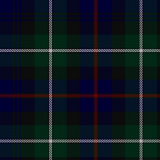Tartan of the 78th Highlanders Regiment

When one thinks of Scotland, many iconic images come to mind; rolling green hills, ancient castles, and Nessie swimming in her loch. Even more memorable than these, however, is the patterned fabric which has come to symbolize Scottish culture itself: Tartan is the only textile design in the world of which a tiny scrap can evoke such feelings of pride, such identification with the historical struggles of Scots, and identification with those desirable traits associated with being Scottish - honesty, industriousness and bravery in battle.*
Although tartan-style fabrics have a very long history – a good portion of it not Scottish – today these textiles are most famous as badges of identification. Specific colors and their arrangements function as a symbolic language in their own right, representing individuals, families and clans, as well as professional groups, companies, and organizations. To the huge international family of Scots and their descendants - estimated at 40 to 60 million around the globe - tartan represents everything that is admirable and wholesome about the land of their fathers.*
The 78th Highlanders Ross-shire Buffs were raised in 1793 by Frances Humbertson Mackenzie (1754 - 1815). In 1881 they were amalgamated with the 72nd Duke of Albany's Own Highlanders to form the Seaforth Highlanders. The Duke of Albany's Own had been raised in 1778 by Kenneth, last Earl of Seaforth as the 72nd Highlanders.**
*http://www.tartansauthority.com/tartan/
**https://www.tartanregister.gov.uk/tartanDetails?ref=5396
© Symbols.com
